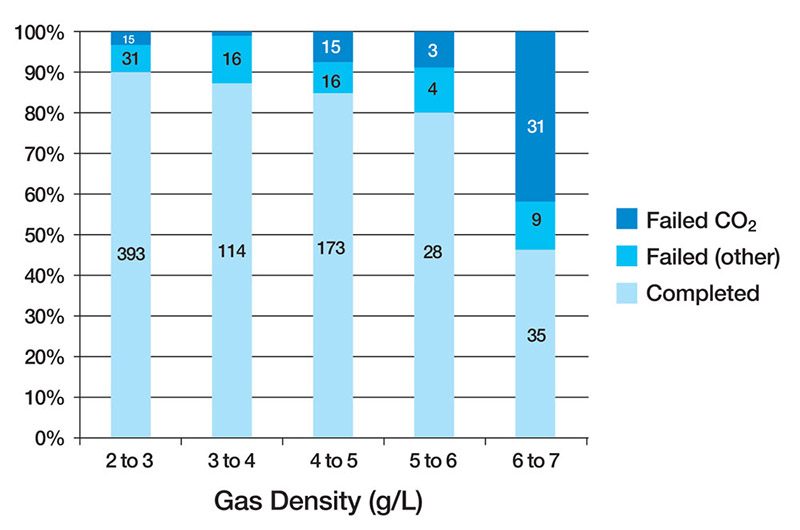G’Day Simon,
Long time no friendly discourse.
I don’t have to say anything, the stunning silence from lack of knowledge of the OC and CC mode WOB for other BOVs by their buyers is telling in itself!
You still don’t even know the WOB of your own AP OCB BOV do you? Little embarrassing, No.
https://www.opensafetyglobal.com/Safety_files/Rebreather_Marketing_vs_Engineering.pdf
Not sure where you ever got a 16 week delivery time from as in 2008 the Apocalypse Type IV iCCR hadn’t even been audited for CE; in fact at that time it was still a prototype. Now the 2009 units at DEMA were ‘customer spec’ units with fully working End-Tidal CO2 Monitor, PPO2 Monitor both with buddy display, voice alerts, lowest WOB on the market, fully flood recoverable, gag strap, single finger BOV bailout etc etc Dave Sutton demonstrating it here
It dived and still dives beautifully
As you know full well it then took until 2011 to receive CE certification to EN14143. No requirements required to be made to the rebreather to pass. All NCRs were resolved through testing/documentation.
The doozy is that the 165 odd Scrubber Duration tests that had been already done were required to be redone for audit of SGS by SIRA as the CO2 was taken from the inhale breathing tube. This of course reduced the scrubber duration when it was then measured at the mouth but that was a safer result…. and that testing at the mouth for CO2, that takes into account the BOV dead-space, is still unique to Open Safety I note!
Unfortunately just prior to Open Safety getting CE in 2011 for all our rebreathers, folk elected to force dive another make of rebreather, despite it saying No Dive. That was reviewed and the auto-bailout feature of the iCCR trigger wasn’t up to the standard of safely bailing out a diver who was forcing the loop open onto a known unsafe breathing gas. ALVBOV has now been updated to enable this and the latest Open Safety HUD is presently being test dived in production specification. As shown fitted here
What systems are you still claiming didn’t work as designed? Rebreather has been out shipped since 2011 when it received CE and not a SINGLE tested metric has been quibbled over. Neither the fact that it has the lowest OC or CC WOB for a rebreather, nor its scrubber duration, nor its underwater flood recovery capability, nor its hydrostatic performance and the list goes on. See
https://deeplife.co.uk/or_dv.php then try and find another rebreather with published/any testing to the same criteria.
Simon, how many rebreathers manufactured by Open Safety haven’t been seen?
Open Safety Equipment Ltd
though yes we have only sold 5 of the Commercial Primary Life Support for 350m Saturation Diving units
Including 2022 manufactured Incursion iMIL-ER, Incursion CMR O2/SCR and Incursion BMR as shown.
Yes multiple militaries are VERY happy with theirs!
Off topic for this topic but it is interesting that you mention the couple of cases that Dr Alex Deas has attended as an SME. And I note that he hasn’t yet been proven wrong in any of his accident analysis.
If memory serves me right the fix for the battery brown out due to bouncing batteries in the Barrett case was a 7quid part! It would be interesting knowing how many other units that could be tested to have the same flawed design also resulted in being listed here
https://www.opensafetyglobal.com/Safety_files/RB_Fatal_Accident_Database_100725.xls
And for the water blocked cells that by design led to either Hypoxia or Hyperoxia in the Skiles case and quite potentially the other 5 or 6 known incidents on the same unit, see the yellow highlights in
https://www.opensafetyglobal.com/Safety_files/DV_O2_cell_study_E4_160415.pdf
then compare with
https://www.hollisrebreathers.com/wp-content/uploads/2019/04/Prism 2 User Manual - English - 12-4072 Rev. 13.pdf
"The collection of condensation on the sensing surface of the sensor (standing water) reduces the signal output. Once either drying or gravity removes the standing water, the signal output will return to normal within 30 seconds. For example, a thin layer of water over the sensing surface will reduce the signal output of a sensor from 11.8 mV to 10.1 mV within 20 minutes; remove the standing water and the signal output returns to 11.8 mV in 30 seconds.”
That sound familiar to you Simon? At least some in the industry are learning…
CE certification of the Open Safety rebreathers at
Open Safety | Certifications inclusive En61508 Functional Safety certification as required by EN14143:2003 and which certification of is still unique to Open Safety’s rebreathers.
Apocalypse Type IV CCR User Manual for those with an interest in learning a bit more about it
https://www.opensafety.eu/manuals/OR_Apocalypse_User_Manual 100426.pdf
Now about the topic of BOV WOB





